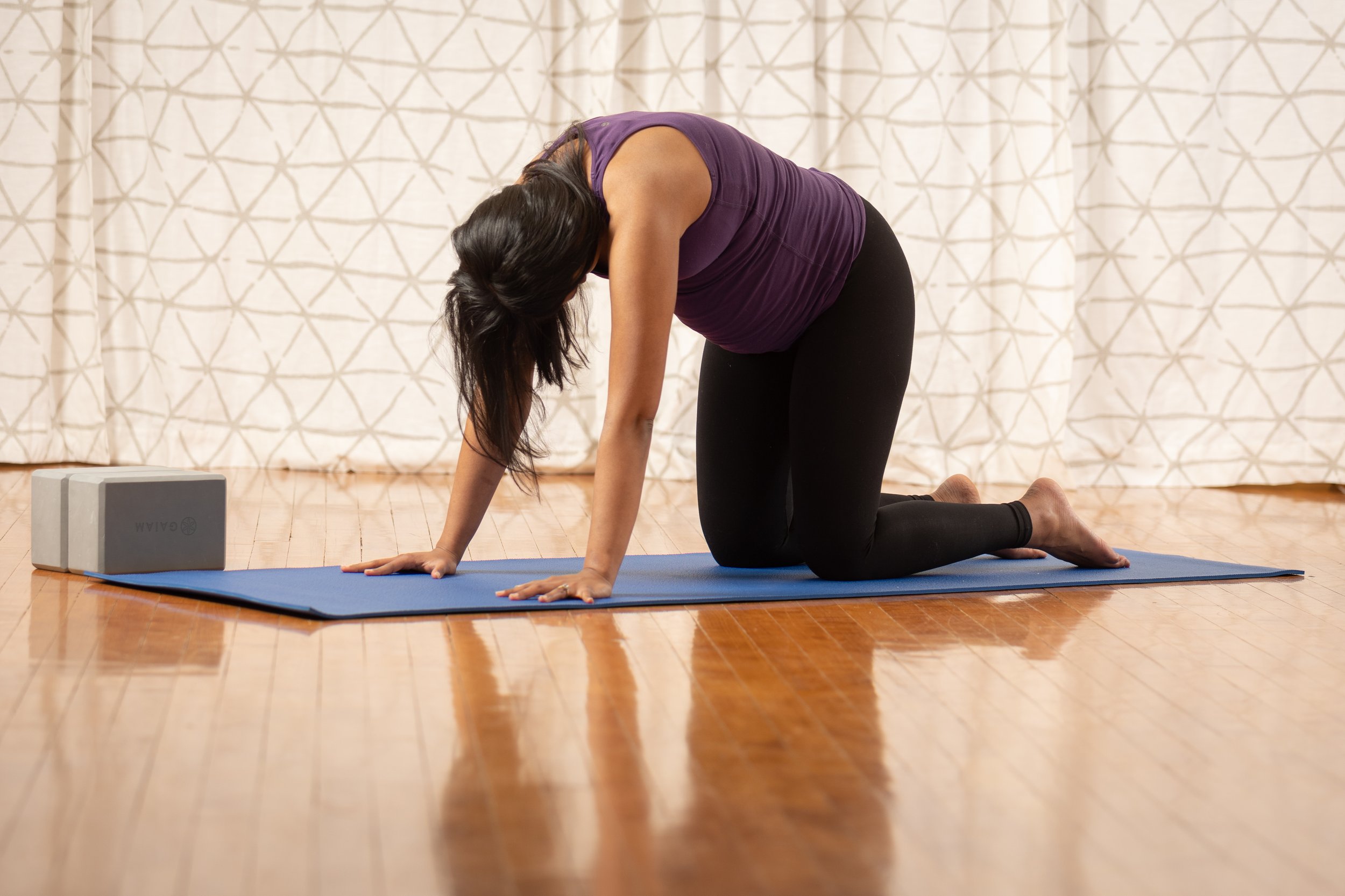It's one of the most well known yoga movements, but Cat/Cow offers far more than simply mobilizing your spine and freeing your hips. When done well this rocking movement sequence can bring better balance to the pelvic floor, mobilize pelvic joints in preparation for labor, tone the deep abdominals, and create fluidity throughout the spine to allow for better alignment throughout pregnancy.
Begin in Table pose on all 4's, with the spine long and the hands planted. On an exhale actively press the floor as you round the spine, tucking the tail and lifting the navel up towards baby as though giving them a gentle hug. On the following inhale, tip the pelvis forward so the tailbone lifts, feeling the sitting bones spread and the forward wave work its way up the spine to lift the chest and head. If you are in your third trimester simply tilt to a neutral spine rather than a big sway back and maintain the hug around baby to protect your abdominal wall.
On the exhale reverse the action rounding the spine once more. Repeat several times, feeling for increased mobility in the pelvis.
The ligaments of the posterior pelvis
The actions of Cat and Cow should be initiated from the pelvis, not the upper spine. While it would be easy to arch and round the upper back this is not were the attention is needed for preparing for the birth process. The anterior tilt position of Cow pose, helps to spread and open the sitz bones as well as moving the pubis away from the tailbone. This spreading not only helps stretch the pelvic floor making it more pliable for birth, but also tones the posterior pelvic ligaments governing how much the sacrum is able to swing backwards as the baby moves through the lower pelvis. Moving out of the way is a critical action for the sacrum in the final crowning and birth stage. Contrary to what the movies and TV show for an ideal position for birthing, spreading the legs and curling the tail forward actually closes the bones of the lower pelvis, making the birth path smaller rather than wider. If we don’t practice this opening movement ahead of labor then the body will not be primed to release and open here when needed.
The Pelvic inlet- opened when in Cat pose
But tilting the pelvis is not the only movement needed for birth preparation. While the baby emerges from the lower pelvic bones, at the earlier stages of labor baby must navigate their way into the upper pelvic bones. This space- known as the pelvic inlet- is in part bounded by the space between the pubic bone, and the convex bump at the top of the sacrum called the sacral promontory. When the pelvis rotates backwards (as it does is Cow pose) the pubis and sacral promontory move away from one another. This creates a deeper opening at the top of the pelvic inlet, allowing more room for the baby to engage and descend during labor.
The pelvic outlet- opened when it Cow pose
So it is the alternation of these two motions from the pelvis which is crucial for birth preparation. And these can be done on hands and knees in the classic Cat/Cow, but they can also be practiced standing, or in early pregnancy stages, lying on the back. Tucking mobilizes the upper pelvic spaces, tones the muscles of the glutes and hips and stretches the deep hip flexors. Tilting spreads the lower pelvic bones, opens the posterior pelvic ligaments, and stretches the pelvic floor for better overall tone during pushing and birth.
Points of caution: When moving into Cow pose be sure not to leave the belly hanging down- especially in the 3rd trimester as this can create excessive strain on the front abdominal muscles increasing the chance for diastasis recti. Instead, tilt the pelvis forward while gently hugging baby with the transverse abdominals. The final pose will have less of a backbend- but will focus the attention in the pelvis rather than borrowing from the lumbar spine.
The essential mama poses at your fingertips
Click the link below for a free downloadable ebook version of my Essential Mama Poses so you can take my most recommended poses right to the mat.






